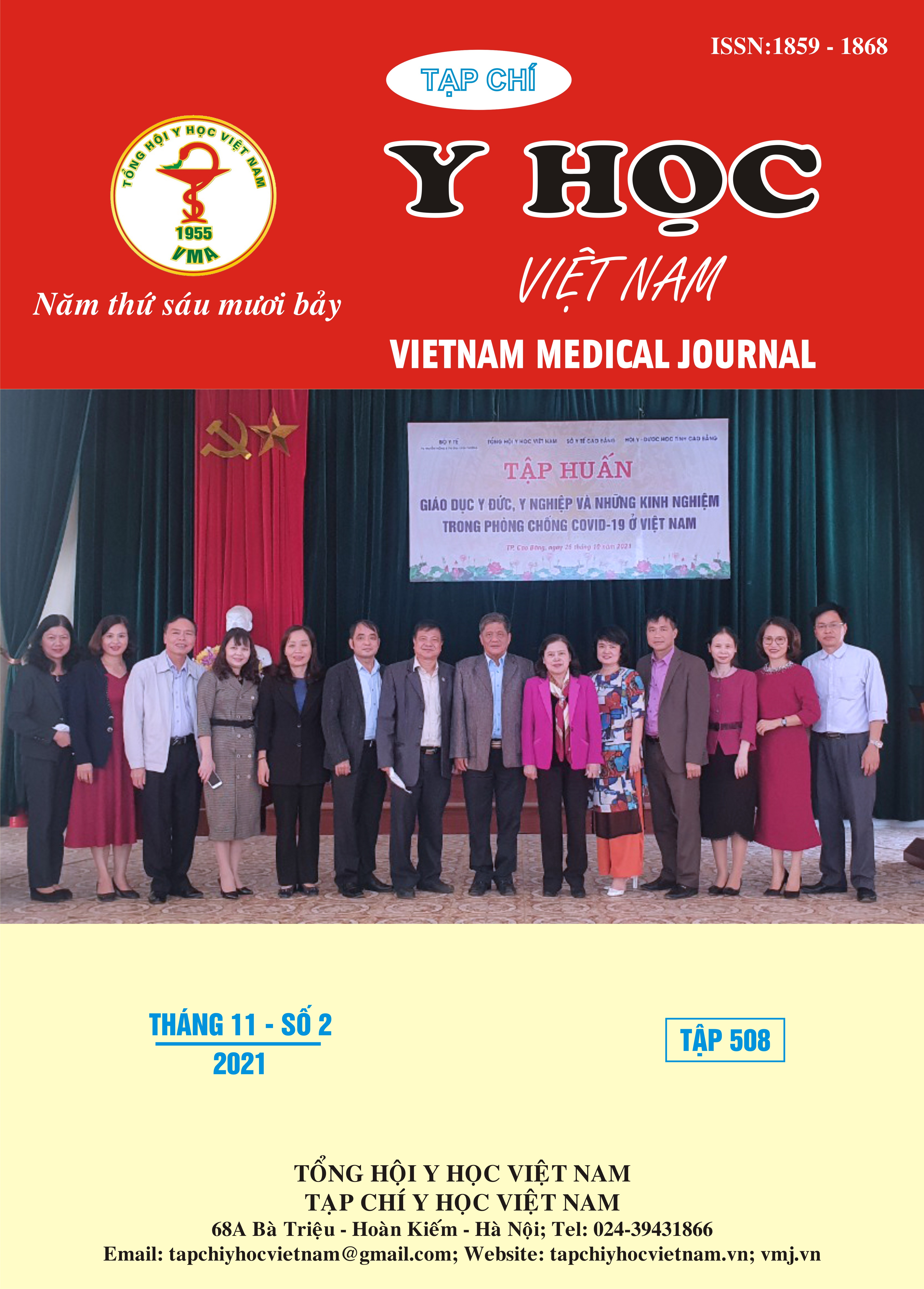SUMMARY ENDOVASCULAR TREATMENT OF TRAUMATIC CAROTID CAVERNOUS FISTULA WITH DETACHABLE COILS: STUDY OF 74 CASES
Main Article Content
Abstract
Obiectives: describe some clinical features, imaging characteristics and treatment results by Endovascular treatment (ET) on patient with Traumatic carotid cavernous fistula (TCCF). Methods: Case series study design, retrospective medical records of 74 patients with TCCFs, who was treated by ET with detachable coils at Choray hospital from 01/2019 to 06/2021. The efficacy and safety were evaluated by variants: Complete or partial occlusion, clinical improvenment, the preservation of the internal carotid artery (ICA), procedural complications and recurrence at the 3-month follow-up after ET. Results: Patients with clinical improvement achieved 73/74 patients (98.6%), of which complete occlusion was 67 patients, partial occlusion in 6 patients and treatment failure in 1 patient. The preservation of the ICA was observed in 69/74 (93.2%) cases. Procudre-related complications were recorded with 2 cases of transient ischemic attack, 1 case with coils herniation into the ICA and 1 case with left-side weakness. No cases of recurrence or death were reported within 3 months of clinical follow-up after ET. Conclusions: Endovascular treatment with detachable coils is a highly safe and effective method to treat traumatic carotid cavernous fistula. Detachable coils may increase the ability to preserve the internal common artery.
Article Details
Keywords
Traumatic carotid cavernous fistula, endovascular treatment
References
2. Barker D.W., Jungreis C., Horton J., et al. (1993) "Balloon test occlusion of the internal carotid artery: change in stump pressure over 15 minutes and its correlation with xenon CT cerebral blood flow". American journal of neuroradiology, 14 (3), 587-590.
3. Barrow D.L., Spector R.H., Braun I.F., et al. (1985) "Classification and treatment of spontaneous carotid-cavernous sinus fistulas". Journal of neurosurgery, 62 (2), 248-256.
4. Chi C.T., Nguyen D., Duc V.T., et al. (2014) "Direct traumatic carotid cavernous fistula: angiographic classification and treatment strategies study of 172 cases". Interventional Neuroradiology, 20 (4), 461-475.
5. De Renzis A., Nappini S., Consoli A., et al. (2013) "Balloon-Assisted Coiling of the Cavernous Sinus to Treat Direct Carotid Cavernous Fistula: A Single Center Experience of 13 Consecutive Patients". Interventional Neuroradiology, 19 (3), 344-352.
6. Du B., Zhang M., Wang Y., et al. (2016) "A retrospective analysis of 38 carotid cavernous fistula patients treated with balloon-assisted endovascular fistula embolization through simultaneous transarterial and transvenous approaches". Int J Clin Exp Med, 9 (10), 19399-19407.
7. Gao B.-L., Wang Z.-L., Li T.-X., et al. (2018) "Recurrence risk factors in detachable balloon embolization of traumatic direct carotid cavernous fistulas in 188 patients". Journal of neurointerventional surgery, 10 (7), 704-707.
8. Han M.H. (2003) "Endovascular Treatment in Direct Carotid Cavernous Fistula". Interventional Neuroradiology, 9 (2_suppl), 55-62.
9. Korkmazer B., Kocak B., Tureci E., et al. (2013) "Endovascular treatment of carotid cavernous sinus fistula: a systematic review". World journal of radiology, 5 (4), 143.


